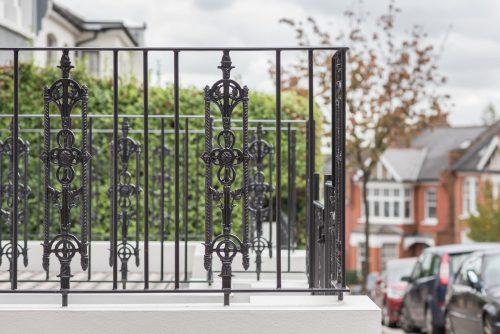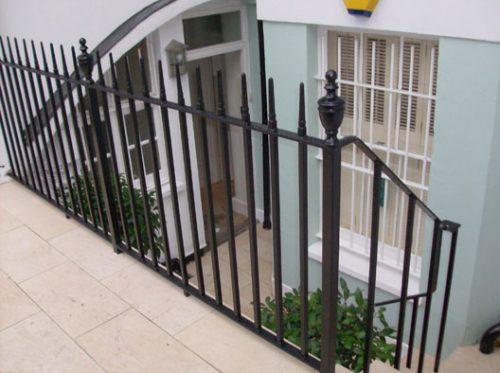If you’re looking to repair or restore sections of the original metalwork outside your property, there are a few things you need to consider. As we discussed previously, design tastes varied considerably over the Victorian, Edwardian and Georgian periods so it is important to try and accurately estimate the age of the metalwork (the clue is usually in the design). The other key consideration is whether the metalwork was manufactured from cast or wrought iron – the answer can have a considerable bearing on how you maintain it and how you care for it. To understand the difference, it’s important to understand how the materials are produced and why.
Wrought Iron

The long history of wrought iron is captured within its very name. The word wrought is an archaic English term which has been replaced in common usage by the term “to work” and there is certainly a lot of work involved in its production! The metal is produced through a smelting process then hammered into shape by the blacksmith (as seen in virtually any movie involving blacksmiths!) and fire welded to form the final piece.
The process has been used throughout much of the history of the western world. The material has a very low carbon content (less than 0.08%) and is formed through a combination of highly refined iron and a small amount of slag. It is this combination which makes the metal malleable and easy to forge at red heat.
Wrought iron metalwork was most popular in the Georgian and early Victorian periods and can usually be identified as the pieces will often show some signs of the hammering processes used to create them, are often quite delicate in design and each of the elements will include slight defects or irregularities which come as a result of them being hand forged.
Cast Iron

Cast Iron methods have been used in China for millennia but only rose to popularity in the west during the last few centuries. The metal has a much higher carbon content that wrought iron (over 2%) and the crystalline formation of this carbon makes the metal quite brittle, meaning it is generally unsuitable to be worked.
The primary benefit of this material is its low melting point and good fluidity, this means that the metal can be melted down and poured into moulds. As the pattern is reusable, cast iron processes can be used to create long runs of identical segments.
Cast iron metalwork is typically slightly less intricate then wrought ironwork (as highly detailed designs are more difficult to accurately reproduce through the casting processes) and sections will look more or less precisely the same. The pieces may also show a seam at the point when the top and bottom moulds meet.
How can I repair or replace damaged metalwork?
If you find yourself with long runs of damaged railings or balustrades, or ones that have been removed entirely, British Spirals & Castings can help to accurately recreate the original designs. We have an extensive pattern library covering centuries of designs and can also recreate castings either based on a sample from your metalwork or using images of metalwork on surrounding properties. Our experienced team have helped listed property owners and those within conservation zones to meet planning requirements and achieve beautiful results.
You can read more about how we go about reinstating railings in this blog and check out an example of our work on this recent project in London.





